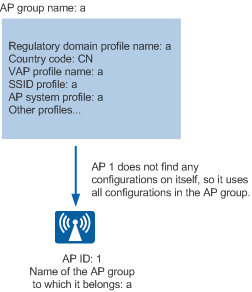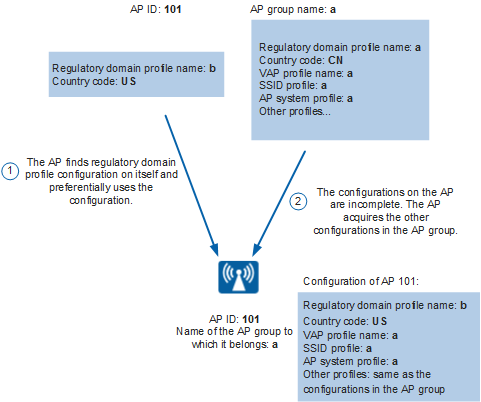AP Group and AP
To simplify the configuration of a large number of APs, you can add them to an AP group and perform centralized configuration.
However, APs may have different configurations. These configurations cannot be uniformly performed but can be directly performed on each AP.
Each AP must and can only join one AP group when going online.
If an AP obtains both AP group and specific configurations from an
AC, the AP specific configurations are preferentially used.
- If no configuration is available on each AP, the AP uses the configurations in the AP group.
- If configurations are available on the AP, the AP uses the configurations preferentially. However, if the configurations are incomplete, the AP obtains the configurations that do not exist on itself from the AP group.
- Performance of APs in an AP group may vary according to the model. If the unified configuration delivered to the AP group is not supported by an AP in the group, the configuration does not take effect for this AP.
As shown in Figure 1, the AP with ID 1 does not find any configurations on itself; therefore, the AP uses
all WLAN configurations in the AP group a to
which it belongs.
As shown in Figure 2, the AP with ID 101 finds configurations on itself so the AP preferentially uses the
configurations. Since there is only regulatory domain profile configuration
on the AP, the AP acquires other configurations in AP group a to which it belongs, for example, VAP profile, AP system
profile, and other profiles shown in the following figure.

